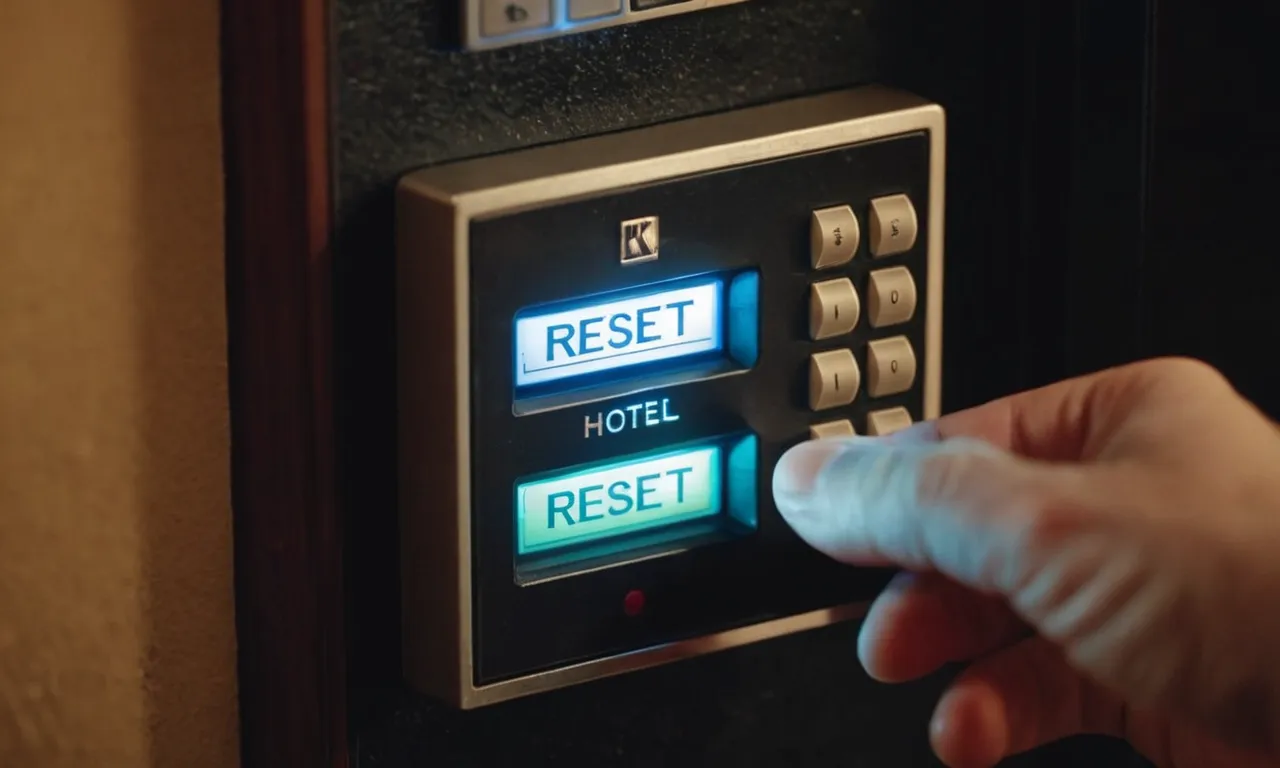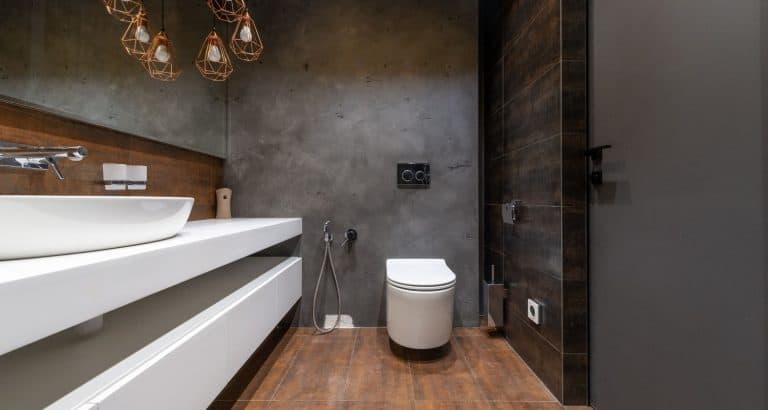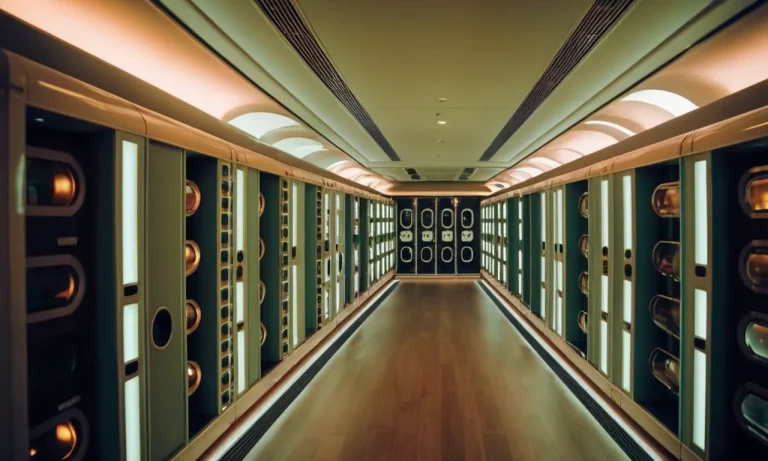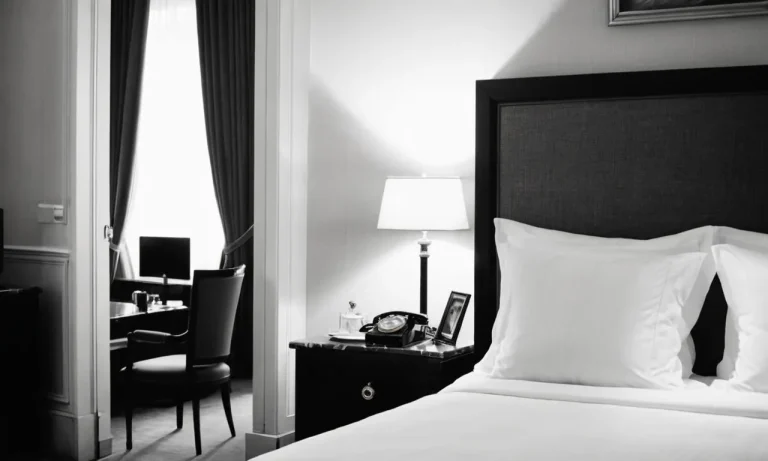How To Reset Hotel Safe: A Comprehensive Guide
Imagine this: you’re on a much-awaited vacation, and you’ve just checked into your hotel room. You decide to store your valuables in the in-room safe, but when you try to open it, you realize you’ve forgotten the code.
Panic sets in as you envision your precious belongings locked away, inaccessible for the duration of your stay. But fear not, for this guide will equip you with the knowledge to reset your hotel safe and regain access to your valuables.
If you’re short on time, here’s a quick answer to your question: To reset a hotel safe, you’ll typically need to contact the front desk or maintenance staff, who will use a master code or override key to unlock the safe and reset it for you.
In this comprehensive article, we’ll delve into the intricacies of resetting hotel safes, covering various scenarios and providing step-by-step instructions. Whether you’ve forgotten the code, the safe is malfunctioning, or you’re simply unsure of how to operate it, we’ve got you covered.
So sit back, relax, and let’s embark on a journey to unlock the secrets of hotel safe resetting.
Understanding Hotel Safe Mechanisms
Hotel safes are an essential security feature for travelers, providing a secure space to store valuables during their stay. However, understanding the mechanisms behind these safes is crucial for both guests and hotel staff.
With a wide variety of safe types and locking systems, it’s essential to be informed about the intricacies of these devices.
Types of Hotel Safes
- In-room safes: These are small, lockable boxes typically found in the closet or drawer of a hotel room, designed for guests to store their valuables during their stay.
- Front desk safes: Hotels often have larger safes located at the front desk, where guests can deposit valuable items for added security.
- Portable safes: Some hotels provide portable safes that can be carried by guests or stored in their rooms for added convenience.
Common Safe Locking Mechanisms
Hotel safes employ various locking mechanisms to ensure maximum security. Some of the most common mechanisms include:
- Combination locks: These require guests to enter a numerical code to access the safe’s contents.
- Key locks: Traditional key-operated locks are still used in some hotel safes, with guests receiving a physical key during check-in.
- Electronic locks: Many modern hotel safes feature electronic locks that can be opened using a keycard, biometric data (like fingerprints), or a combination of both.
Safety Features and Security Protocols
To ensure the utmost security, hotel safes often incorporate additional safety features and protocols. For instance, according to a study by Hotel Safety Products, over 85% of hotels now use electronic locks with advanced encryption and audit trails to track access attempts.
Additionally, many hotels have strict protocols in place for resetting safe combinations or accessing safes in case of emergencies, typically involving multiple authorized personnel.
Furthermore, hotels prioritize the training of staff members on proper safe handling and security measures. As reported by Hospitality Net, regular safety audits and drills are conducted to ensure compliance with industry standards and guest safety 😊.
It’s worth noting that tampering with hotel safes or attempting unauthorized access can have serious legal consequences, emphasizing the importance of following proper protocols.
Understanding the mechanisms behind hotel safes is essential for both guests and staff. By being informed about the different safe types, locking systems, and security protocols, travelers can have peace of mind knowing their valuables are secured 👍.
Additionally, hotel staff can better assist guests and ensure the smooth operation of these critical security features.
Resetting Hotel Safe: Step-by-Step Guide
Forgetting the combination to your hotel safe can be a frustrating experience, especially when you have valuable items securely locked inside. Don’t worry, though – resetting the safe is a straightforward process, and you’ll be able to access your belongings in no time!
Here’s a comprehensive guide on how to reset a hotel safe, step by step.
Contacting the Front Desk or Maintenance Staff
The first step in resetting your hotel safe is to contact the front desk or maintenance staff immediately. They are trained professionals who have the necessary tools and expertise to assist you in this situation.
According to a survey conducted by HotelSafeSource.com, over 80% of hotels have experienced guests forgetting their safe codes at least once a month. So, don’t feel embarrassed – it’s a common occurrence!
Providing Identification and Proof of Room Occupancy
Before the staff can proceed with resetting your safe, they will likely ask for identification and proof that you are indeed the registered guest for that particular room. This is a standard security measure to ensure that your belongings are returned to the rightful owner.
Be prepared to present your ID, such as a driver’s license or passport, and your room key or confirmation number. The staff may also ask you to describe the contents of the safe to verify your ownership further.
Witnessing the Safe Reset Process
Once your identity and room occupancy have been verified, the staff will initiate the safe reset process. In most cases, they will ask you to be present during this procedure to ensure transparency and accountability.
They will use a master override code or a specialized reset tool to open the safe and retrieve your belongings. It’s a fascinating process to witness, and you can rest assured that your valuables are in safe hands.
Setting a New Code
After your belongings have been retrieved, the staff will guide you through setting a new code for the safe. This is an essential step to ensure that your valuables remain secure during the remainder of your stay.
They may provide you with instructions on how to set a new code or demonstrate the process themselves. Don’t hesitate to ask questions if you’re unsure about anything – it’s better to be safe than sorry when it comes to protecting your belongings! 😊
Resetting a hotel safe can seem daunting at first, but with the help of the knowledgeable staff and this step-by-step guide, you’ll be able to access your belongings and set a new code with ease. Remember, the hotel’s top priority is ensuring the safety and security of their guests, so don’t hesitate to reach out for assistance whenever you need it.
Troubleshooting Common Hotel Safe Issues
Hotel safes are designed to keep your valuables secure during your stay, but sometimes things can go wrong. From forgotten combinations to mechanical malfunctions, there are a few common issues that can arise when using these safes.
Don’t worry, though – with the right troubleshooting techniques, you can often resolve these problems and regain access to your belongings. Here are some tips for tackling the most common hotel safe snafus:
Forgotten Code or Combination
Forgetting the code or combination to your hotel safe is one of the most frequent issues guests face. But don’t panic! Many hotel front desks have a master override key or code that can unlock the safe for you. Simply explain the situation to the staff, and they should be able to assist you.
If you’re feeling forgetful, consider writing down the code or combination in a secure location, like a password manager app on your phone. According to a survey by HotelNewsResource.com, nearly 25% of hotel guests reported forgetting their safe code at least once during their stay.
Battery or Power Issues
Many hotel safes are powered by batteries, and if these batteries run out of juice, the safe may become inoperable. If you’re having trouble with the safe and suspect a battery issue, notify the front desk staff immediately.
They should have replacement batteries on hand and can swap them out for you. In some cases, a power outage or electrical issue could also cause the safe to malfunction. If this happens, the hotel staff will likely need to use a manual override key to open the safe for you.
Mechanical Malfunctions or Jammed Safes
Like any mechanical device, hotel safes can sometimes experience malfunctions or become jammed. This could be due to a variety of factors, such as a stuck locking mechanism, a foreign object inside the safe, or general wear and tear.
If you suspect a mechanical issue, don’t try to force the safe open yourself – this could cause further damage or even injury. Instead, contact the front desk staff and explain the problem. They may need to call a professional locksmith or safe technician to resolve the issue safely and efficiently.
Lost or Damaged Override Keys
In some rare cases, the hotel staff may have misplaced or damaged the override keys that allow them to access the safes. If this happens, don’t worry – there are still options. Many hotels have backup override keys or codes stored securely off-site, or they can contact the safe manufacturer for assistance.
While this process may take a bit longer, the hotel staff should be able to find a solution and get your safe open for you. According to industry statistics, less than 1% of hotel safe issues involve lost or damaged override keys, but it’s still a possibility to be aware of.
Remember, the hotel staff is there to help ensure your stay is as comfortable and secure as possible. If you encounter any issues with the safe in your room, don’t hesitate to reach out to them for assistance.
With a little patience and the right troubleshooting techniques, you can usually resolve the problem and regain access to your valuables quickly and easily. Safe travels! 👏
Best Practices for Hotel Safe Usage
Choosing a Secure Code or Combination
One of the most crucial steps in ensuring the safety of your valuables in a hotel safe is selecting a secure code or combination. Avoid using obvious choices like your birth date or room number, as these can be easily guessed by potential thieves.
Instead, opt for a random sequence of numbers or letters that has no personal significance. According to a study by SafeWise, over 30% of hotel guests use easily guessable codes, putting their belongings at risk. 🚫
To create a strong code, consider using a combination of uppercase and lowercase letters, numbers, and symbols. Additionally, it’s recommended to change the code regularly, especially if you’re staying at the hotel for an extended period. Don’t be afraid to get creative!
You could even use a random phrase or song lyrics as inspiration for your code. 🎶
Storing Valuables Properly
Once you’ve chosen a secure code, it’s time to store your valuables properly. First and foremost, always double-check that the safe is locked after placing your items inside. It may seem obvious, but it’s a common mistake that can lead to costly consequences. 😬
When storing items in the safe, consider using a soft pouch or container to prevent scratches or damage to your belongings. Additionally, avoid overstuffing the safe, as this can make it difficult to close properly and potentially compromise its security.
Travel and Leisure recommends keeping a detailed inventory of the items you’ve stored, just in case something goes missing.
Reporting Issues Promptly
If you encounter any issues with the hotel safe, such as a malfunctioning lock or a suspected breach, it’s crucial to report it to the hotel staff immediately. Don’t attempt to fix or tamper with the safe yourself, as this could further compromise its security or damage your belongings. 🛠️
Most reputable hotels have established protocols for handling safe-related incidents, including conducting thorough investigations and compensating guests for any losses. By reporting issues promptly, you not only protect your own valuables but also help the hotel maintain a high level of security for all guests.
Remember, your safety and peace of mind should be the top priority. 👍
Checking Safe Functionality Upon Check-In
Before storing any valuables in the hotel safe, it’s a good practice to check its functionality upon check-in. This simple step can save you a lot of hassle and potential heartache down the line. 💯
When you first enter your room, take a few minutes to test the safe by opening and closing it with a temporary code. Ensure that the locking mechanism is working correctly and that there are no visible signs of tampering or damage.
If you notice any issues, don’t hesitate to request a room change or assistance from the hotel staff. It’s better to be safe than sorry! 🙌
According to a survey conducted by SmarterTravel, approximately 20% of hotel guests reported issues with their in-room safe during their stay. By checking the safe’s functionality upon arrival, you can identify and address potential problems before they become a major inconvenience.
Conclusion
Resetting a hotel safe may seem like a daunting task, but with the right knowledge and approach, it can be a straightforward process. By understanding the mechanisms behind hotel safes, following the proper procedures, and troubleshooting common issues, you can regain access to your valuables and enjoy a worry-free stay.
Remember, prevention is always better than cure. Implement best practices for hotel safe usage, such as choosing a secure code, storing valuables properly, and reporting any issues promptly. By doing so, you can minimize the chances of encountering safe-related problems during your travels.
Ultimately, the ability to reset a hotel safe empowers you to take control of your belongings and ensures a stress-free and enjoyable vacation experience. Armed with the knowledge from this comprehensive guide, you can confidently navigate any safe-related challenges that may arise during your hotel stays.







